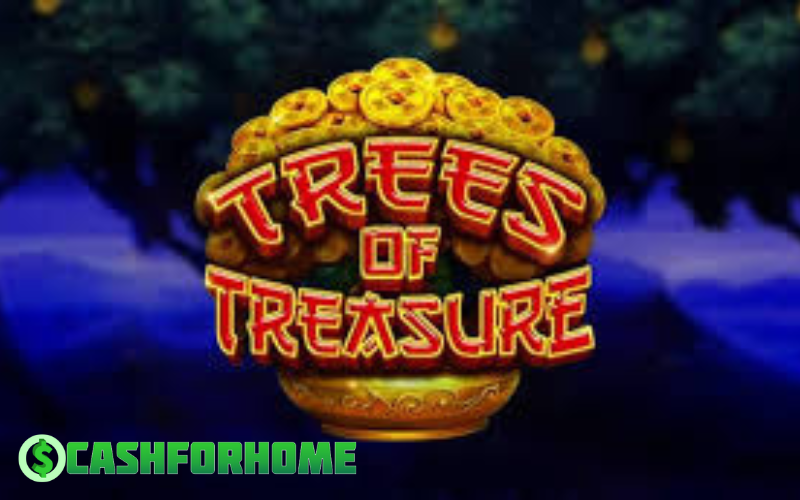Welcome to our comprehensive guide on unlocking the secrets of Trees of Treasure. Trees of Treasure, with their rich history and cultural significance, have intrigued people around the world for centuries. These mystical trees hold secrets waiting to be discovered, offering a plethora of benefits yet to be fully explored.
Throughout various cultures, Trees of Treasure have been revered for their mystical properties and revered as symbols of prosperity, protection, and wisdom. The intrigue and mystery surrounding these trees have inspired legends, rituals, and beliefs that continue to captivate both historians and nature enthusiasts alike.
Our goal with this guide is to delve deep into the enigmatic world of Trees of Treasure, unveiling the hidden secrets and untold stories that have been passed down through generations. Join us as we embark on a journey to uncover the mysteries and benefits that these extraordinary trees offer.

THE HISTORY AND CULTURAL SIGNIFICANCE OF TREES OF TREASURE
Trees of Treasure have been revered across various ancient civilizations as sacred entities, embodying profound cultural significance and symbolic value. Let’s delve into how these ancient cultures honored and celebrated Trees of Treasure through their rituals and beliefs.
ANCIENT CIVILIZATIONS AND SACRED TREES
Ancient civilizations worldwide held Trees of Treasure in high esteem, considering them as sacred links between the earthly realm and the divine. From the mighty Oak in Celtic folklore to the revered Bodhi Tree in Buddhism, trees have played pivotal roles in shaping cultural beliefs and practices.
In Celtic mythology, the Oak tree symbolized strength, endurance, and wisdom. Druids, the religious leaders of the Celts, conducted rituals and ceremonies in sacred oak groves, believing these trees to be gateways to other realms. The Oak was considered a source of protection, guidance, and spiritual sustenance.
Similarly, the Bodhi Tree holds immense significance in Buddhism as the tree under which Siddhartha Gautama, later known as Buddha, attained enlightenment. Buddhists worldwide revere the Bodhi Tree as a symbol of awakening, peace, and enlightenment. Pilgrims visit Bodhi Trees in temples and monasteries to meditate, seeking inner peace and spiritual growth.
In Norse mythology, the World Tree, Yggdrasil, stood at the center of the universe, connecting the nine realms and serving as a cosmic axis. It represented the cycle of life, death, and rebirth. Vikings believed that Yggdrasil provided stability, protection, and vitality to the world, emphasizing the interconnectedness of all beings.
The Maya civilization venerated the Ceiba tree, also known as the Tree of Life, as a sacred symbol of creation and renewal. Mayans believed that the Ceiba tree bridged the gap between the mortal realm and the underworld, serving as a conduit for communication with ancestors and spirits.
Throughout history, Trees of Treasure have captivated human imagination, offering solace, wisdom, and spiritual nourishment to diverse cultures worldwide. These ancient beliefs and rituals continue to inspire reverence for nature and the interconnectedness of all living beings.
UNVEILING THE HIDDEN PROPERTIES OF TREES OF TREASURE
Trees of Treasure hold a vital place in our ecological system, playing a key role in sustaining biodiversity and environmental balance. Conservation efforts are crucial to protect these valuable tree species from threats like deforestation and habitat destruction. By safeguarding Trees of Treasure, we are preserving not just a species but an entire ecosystem that relies on their presence.
ECOLOGICAL IMPORTANCE AND CONSERVATION EFFORTS
The Trees of Treasure contribute significantly to carbon sequestration, helping to mitigate the effects of climate change. Their intricate root systems prevent soil erosion and provide habitats for numerous wildlife species. Conservation efforts such as reforestation, protected area designation, and sustainable harvesting practices are essential to ensure the longevity of Trees of Treasure and the ecosystems they support.
MEDICINAL AND THERAPEUTIC USES
Delving into the realm of alternative medicine, Trees of Treasure reveal a treasure trove of medicinal properties and traditional uses. These trees are renowned for their healing potential in various ailments, ranging from common colds to more complex health conditions. Incorporating extracts or derivatives from Trees of Treasure into herbal remedies can offer natural solutions with promising health benefits.
Exploring the therapeutic uses of Trees of Treasure uncovers a rich history of their integration into traditional healing practices worldwide. From bark infusions to leaf poultices, these natural remedies harness the power of nature to promote well-being and vitality. Embracing the medicinal potential of Trees of Treasure not only honors ancient traditions but also presents opportunities for modern healthcare advancements.
Trees ofTreasure, often shrouded in mystery and coveted for their unique properties, can be found in various regions worldwide. Let’s explore the global hotspots where these valuable trees are commonly discovered and the challenges faced in protecting them.
CONCLUSION
In unlocking the secrets of Trees ofTreasure, we’ve unearthed a world teeming with cultural, environmental, and economic significance. These remarkable tree species not only shape landscapes but also hold stories of centuries past, enriching our heritage and connecting us to our roots.
By delving into the unique qualities of Trees of Treasure, we embark on a journey of discovery and appreciation. Their resilience in the face of challenges serves as a testament to the importance of conservation efforts. It’s not just about preserving nature; it’s about safeguarding our history and securing a sustainable future.
Let’s leverage our newfound knowledge to take proactive steps in protecting these invaluable trees. By understanding and valuing their role in our ecosystem, we can ensure that Trees of Treasure continue to thrive for generations to come. Together, let’s champion their conservation and celebrate the treasures they bestow upon us.







